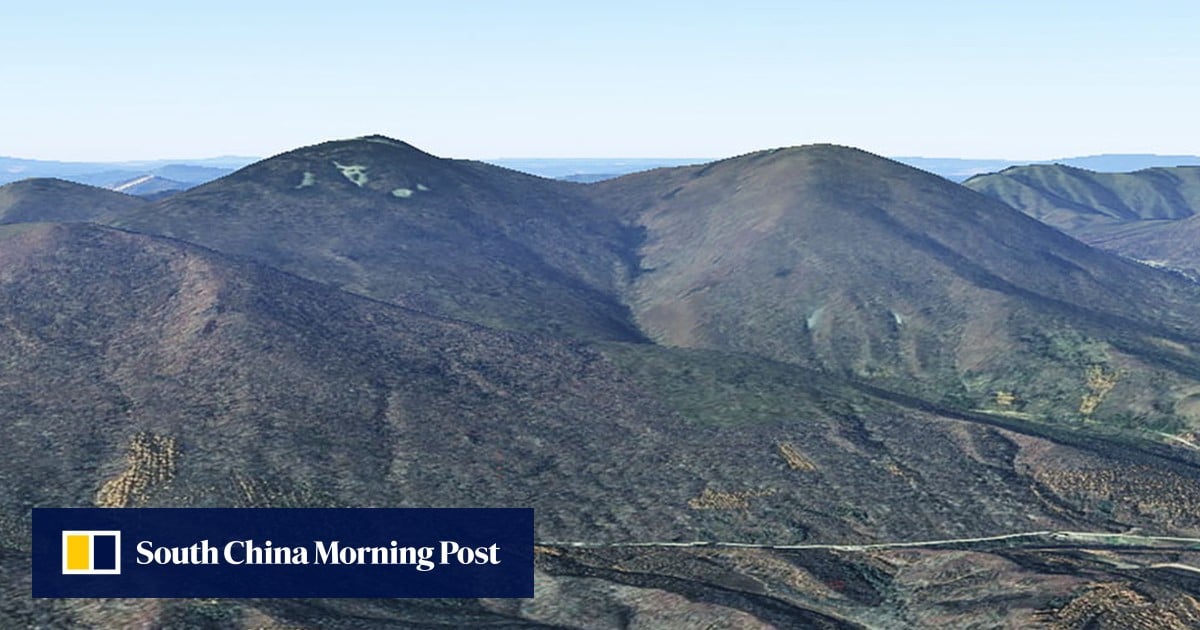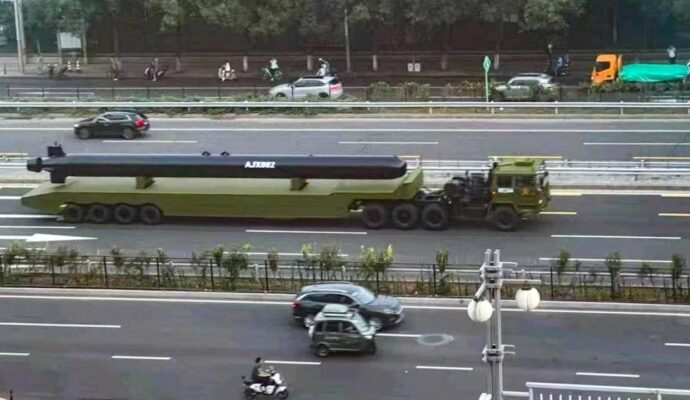
Analysis of rock samples from the site revealed features that could only have been formed by an impact event, according to a paper published in September by international peer-reviewed journal Matter and Radiation at Extremes.
Lead author Chen Ming, a researcher with the Centre for High Pressure Science and Technology Advanced Research, said the crater’s position at the mountain’s summit made it unique among the world’s confirmed impact craters.
“[The] peculiar thing is that this crater is entirely on top of a mountain,” Chen said, adding that it was also at the highest elevation compared to its surroundings of all the known impact craters.
The crater has a diameter of 1,400 metres (4,600ft) and sits between two peaks which the researchers believe were formed when a meteorite or similar extraterrestrial body crashed into the mountain.
Rock fragments from around the crater were found to contain mostly sandstone, as well as a small amount of granite dating from the Jurassic period, which ended around 145 million years ago.
Chinese scientists find traces of biggest asteroid strike of human age
Chinese scientists find traces of biggest asteroid strike of human age
The origins of the rock fragments – known as “celestial stone” by local people – had “remained a mystery for a long time”, the research team said.
Advertisement
A comparison with rocks at the 49,000-year-old Yilan crater in Heilongjiang province found similarities in the weathering patterns, suggesting their ages could be close. However, the exact age of the Baijifeng crater is yet to be determined, according to the paper.
The scientists also discovered the presence of planar deformation features (PDFs) in quartz samples collected at the site. These are planes of glass within a crystal that form when its lattice structure is broken. They only occur at an impact event.
Chen said PDFs were formed by the shock waves caused by the explosion and their presence alone was enough to confirm that the crater was caused by an impact.
Structures that are sometimes mistaken for impact craters – such as large natural sinkholes and the mouths of volcanoes – would not have any PDFs present.
Crash course in saving the Earth: Chinese simulation stops asteroid strike
Crash course in saving the Earth: Chinese simulation stops asteroid strike
All three confirmed impact craters in China are in the country’s northeast and Chen has been involved in identifying each one. But the number was well below the global average, the paper noted.
Advertisement
Chen said the team was continuing to search for more impact sites, but the process of finding and confirming these structures can take a long time.
State news agency Xinhua reported that confirmation of the Baijifeng Mountain crater’s origin could offer a new perspective into how impact events form structures in unique terrain.
Advertisement


